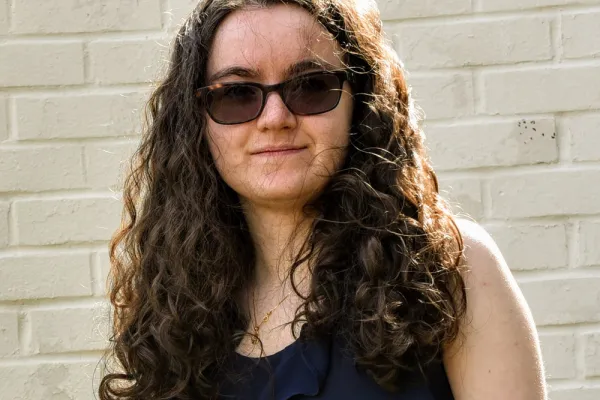Kelly Coons ’22: Building Autism Awareness
Research & Inquiry

Published August 19, 2021
English major Kelly Coons ’22 grew up knowing something was different about herself. But even after she was diagnosed with autism spectrum disorder at the age of 13, she did not have the clinical language to pinpoint what that difference was.
“A lot of the autistic representation I encountered as a kid was not accurate,” the rising senior says. In fact, a lot of it was actually quite harmful, painting autism as a hardship—as something to be overcome. “I get enough of that narrative from other places,” Coons laughs. “I don’t need it in my media.”
So when an opportunity arose for Coons to use her love of words to bring autism awareness and representation to a wider audience, she was overjoyed.
Over the last year, Coons spent several hours each week writing a young adult novel. Through an online writing workshop sponsored by the Creator Institute, she received a crash course in crafting long-form content. Beginning in the summer of 2020, she drafted “All Ways,” a coming-of-age story about two brothers—both of whom have autism—who embark on a cross-country journey together.
“I want someone in a similar situation to me who might read ‘All Ways’ to feel seen, and to return to it later and still feel seen,” Coons says. “Rather than feeling betrayed by a book they enjoyed once upon a time,” she adds, recalling the disappointment and frustration she’s felt upon reexamining some of the books from her adolescence.
Richard Millington, the college’s Helen and Laura Shedd Professor of English Language and Literature, says Coons’s novel came as a surprise—and a revelation—to him. “Kelly being Kelly, she just made it happen,” he says.
As her adviser, Millington has watched Coons grow not only in her writing but also in her disability advocacy. “I think the claiming of her identity as an autistic person and her emerging interest in the intellectual perspectives connected to disability studies have been really important elements in her remarkable growth as a student at Smith,” he adds.
Coons chose each aspect of her narrative with an eye toward positive, accurate representation—and, ultimately, the intention of educating neurotypical people about autism.
“By making both of my protagonists autistic,” Coons explains, “I can show how there isn’t one single way of being autistic.” While one main character, Andreas, is nonverbal, his brother, York, is not, challenging stereotypes about what it means to be a person with autism.
This key detail also allowed Coons to demonstrate autistic people interacting with one another—something she says that that is usually missing from media depictions of autism.
Especially noteworthy is the fact that the word “autism” itself does not appear once in the body of the text. “Neither of the characters know they have autism,” says Coons, bringing her own childhood experience onto the page.
Coons’s goals in writing this story are simple, yet fundamental to the advocacy work she undertakes. “I wanted to present an image of autism where the resolution is not ‘let’s go find a cure,’” she says.
While acknowledging that autistic representation has been improving in recent years, Coons hopes that her book and those like it are just the tip of the iceberg. “I hope it leads to bigger and better representation. I hope it leads to autistic stories being ‘normal’ stories.”